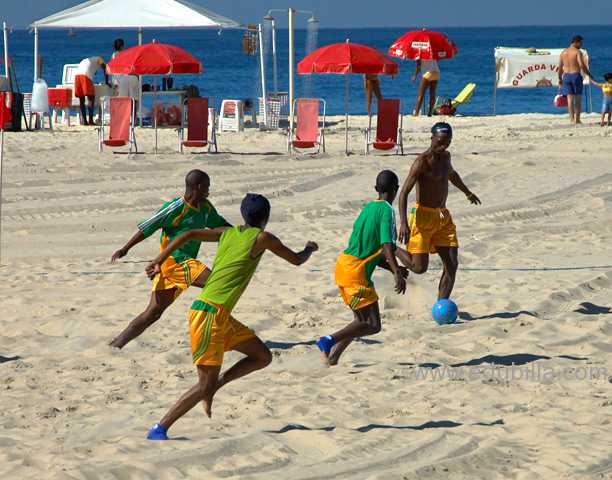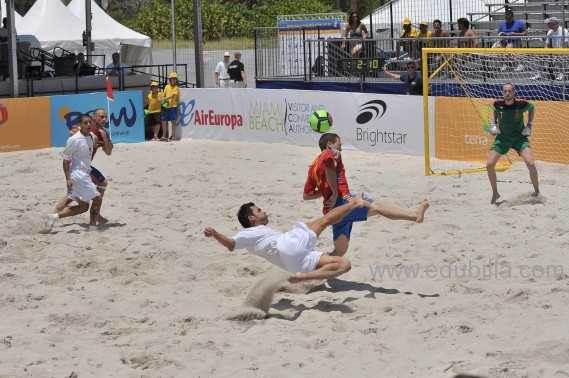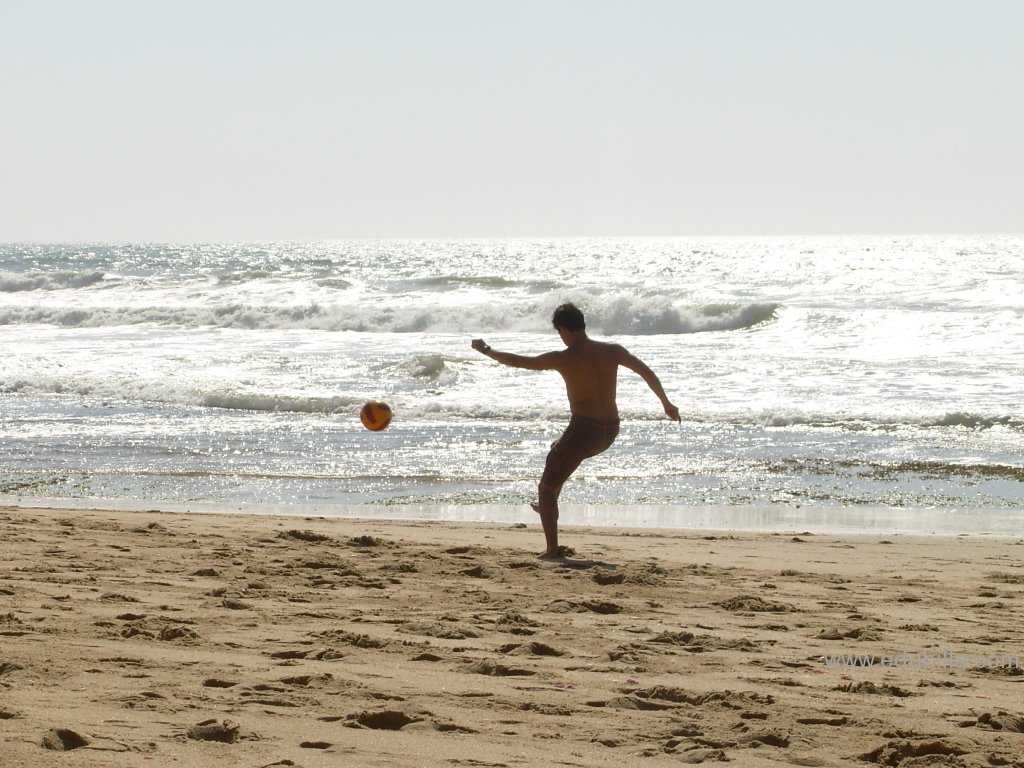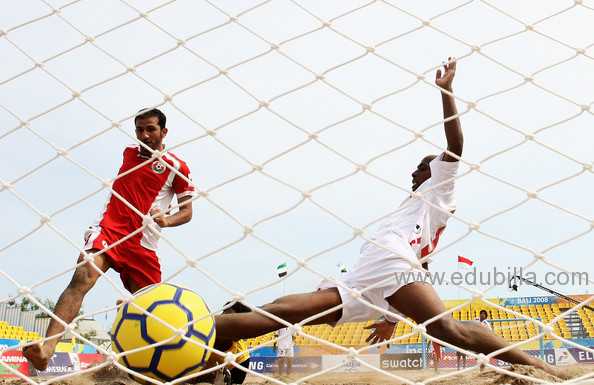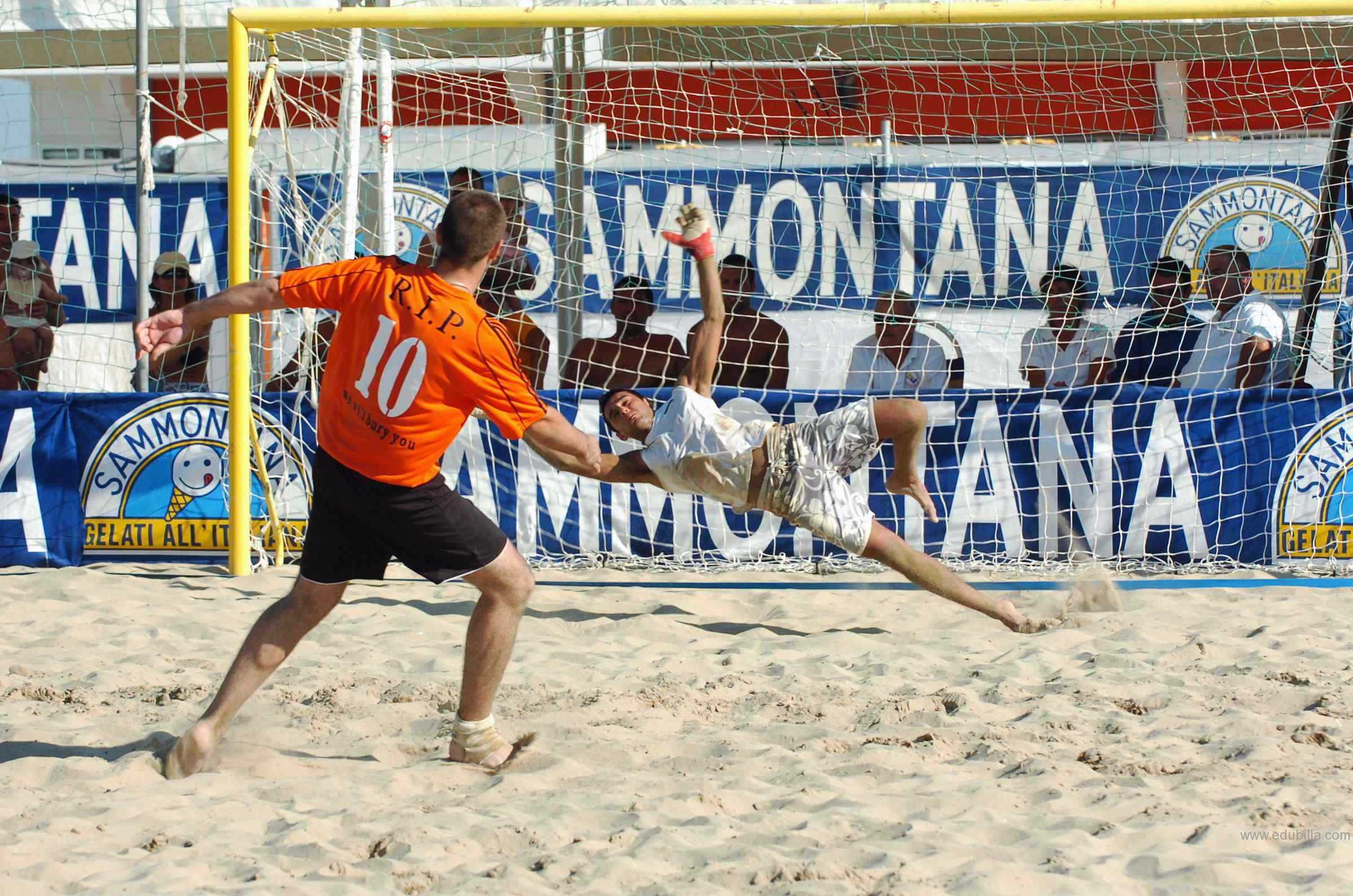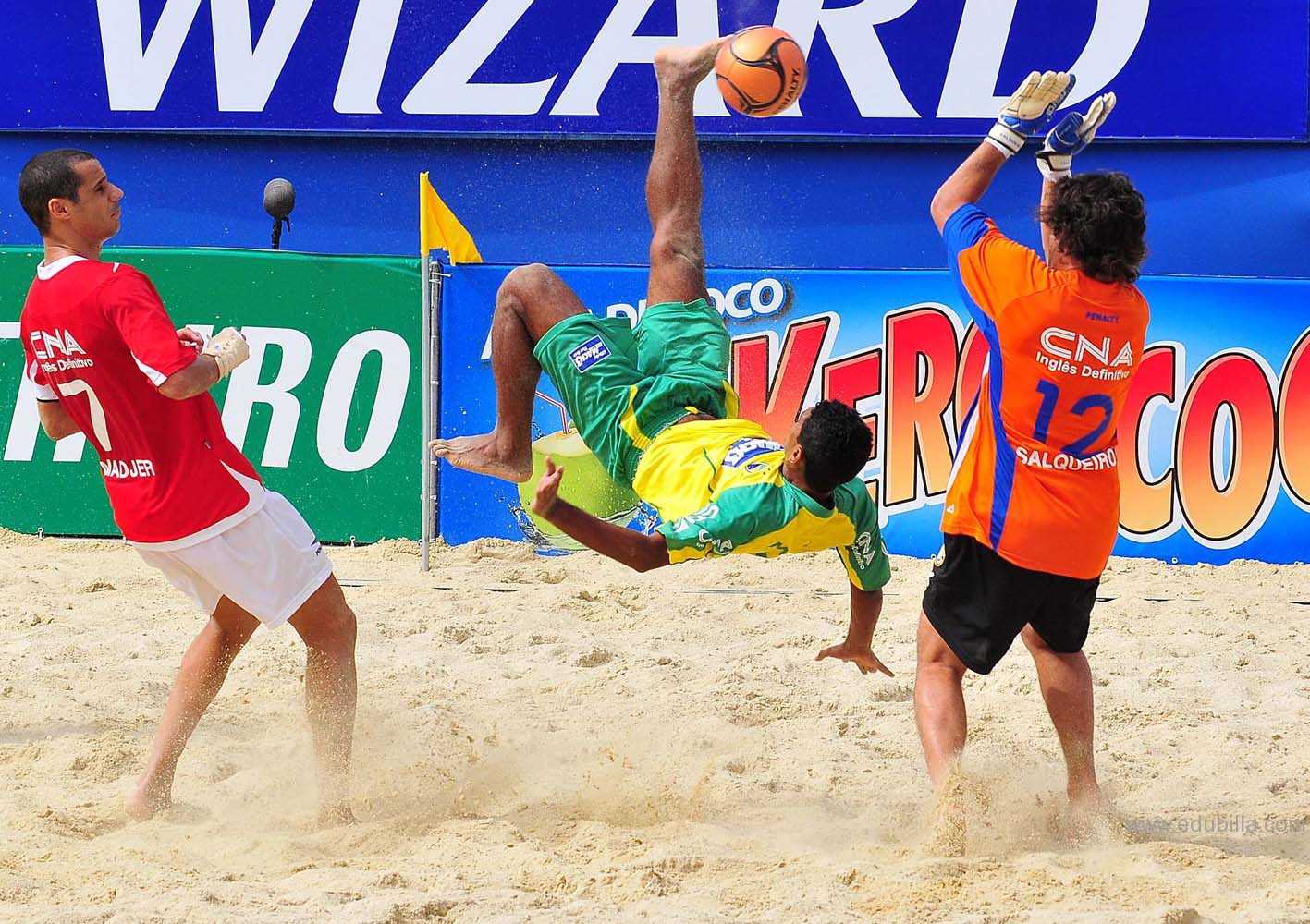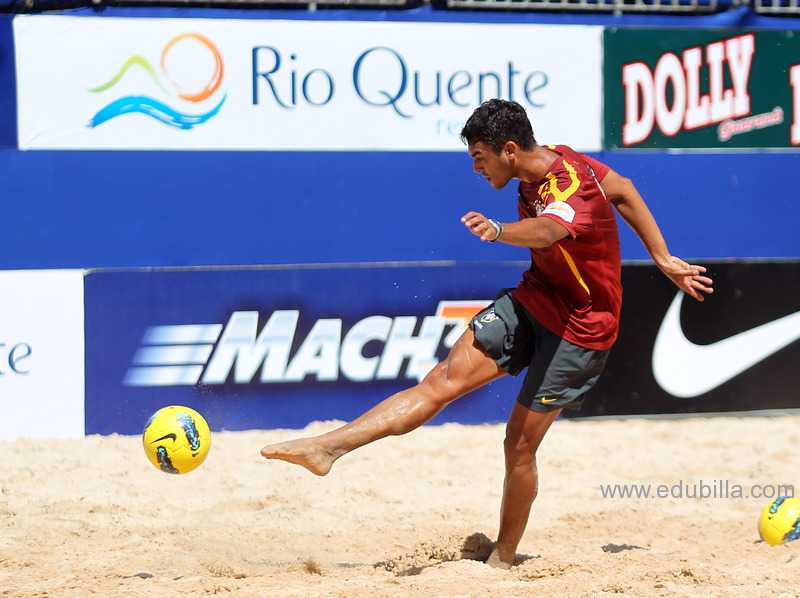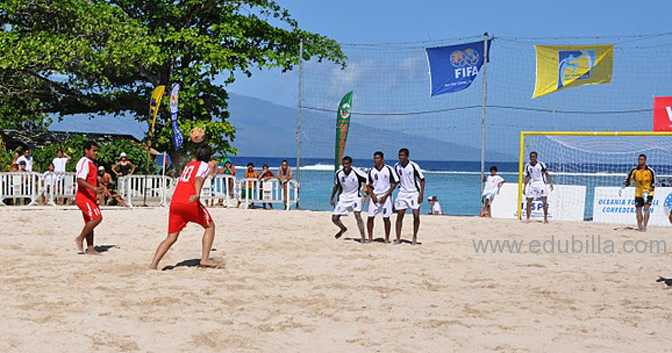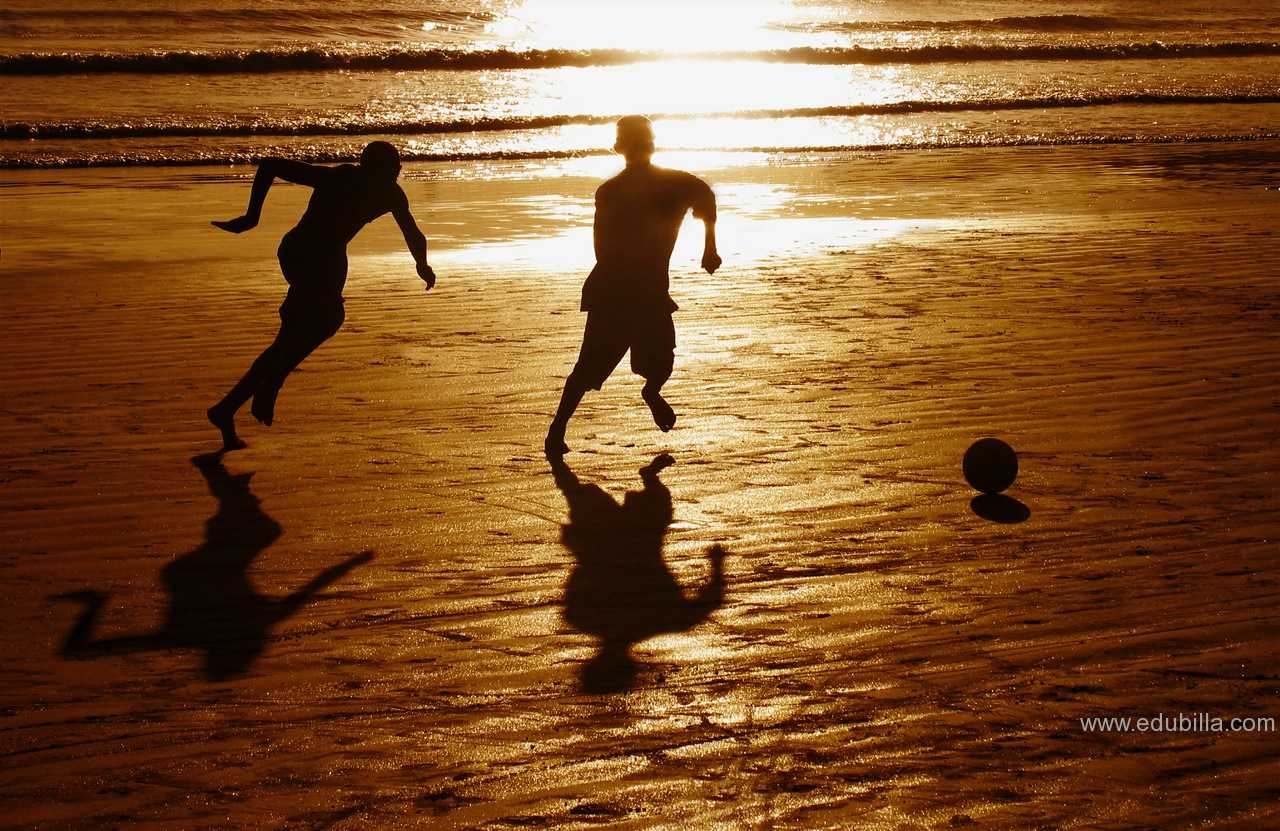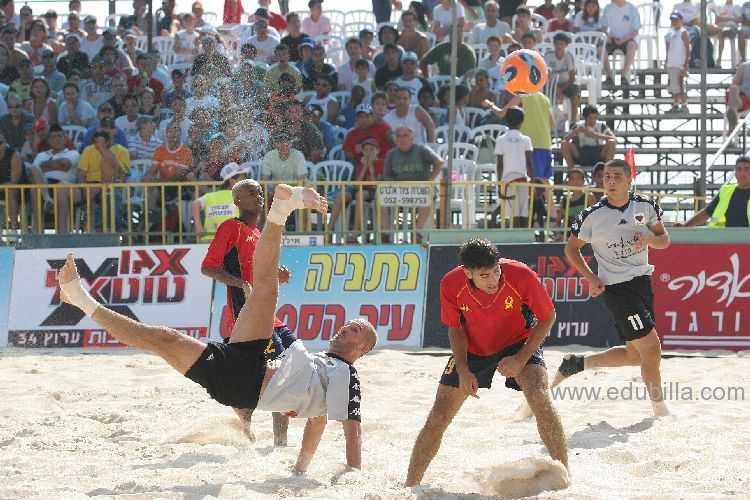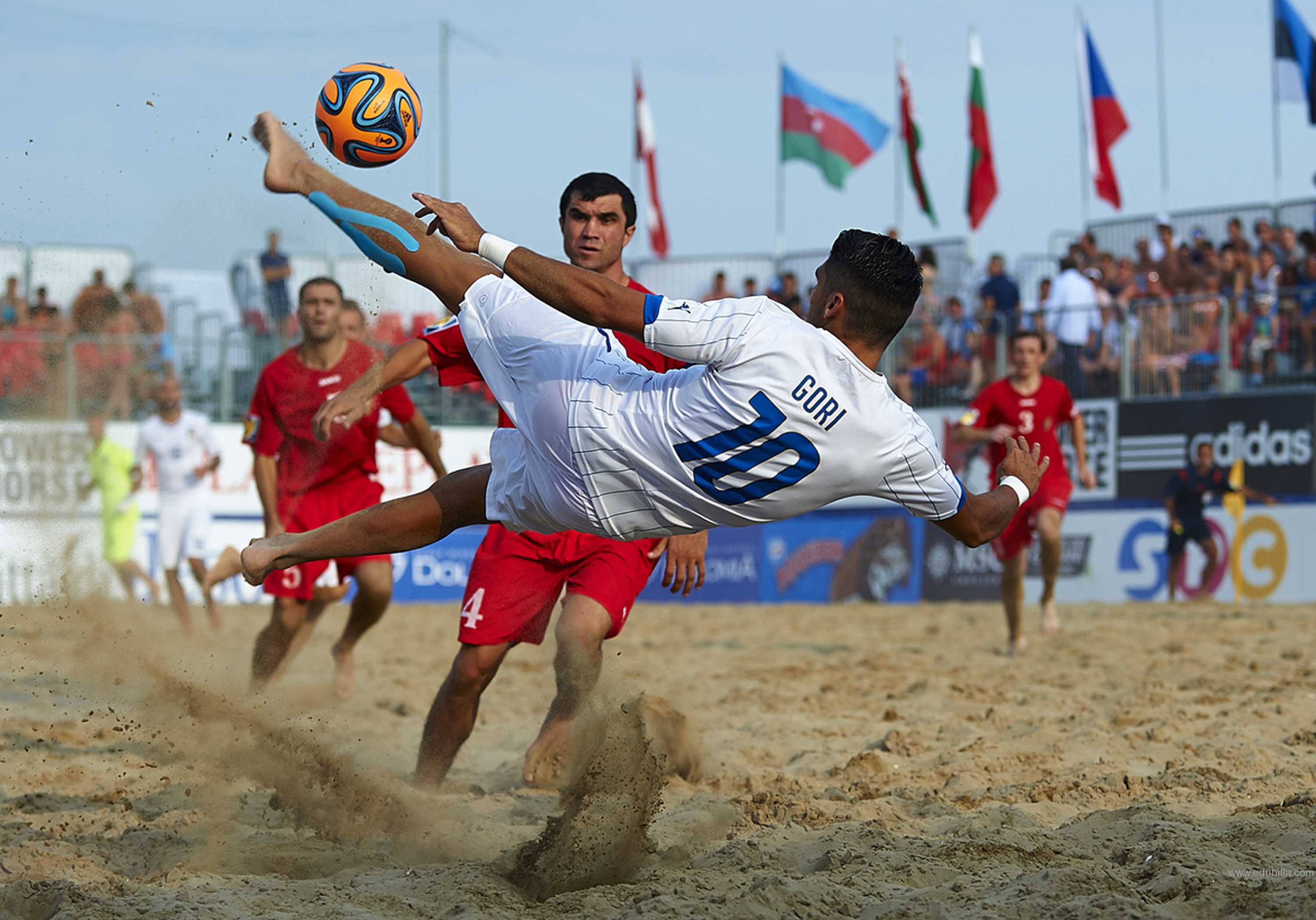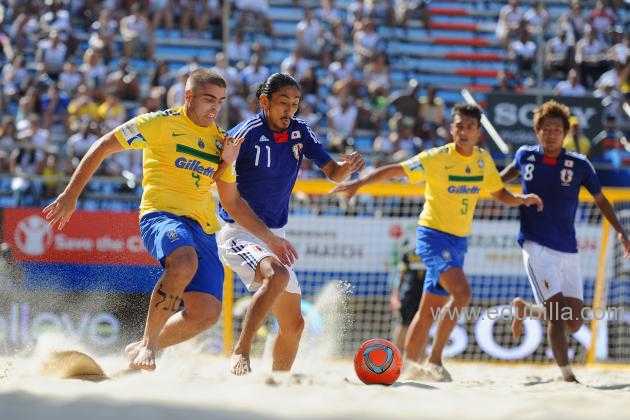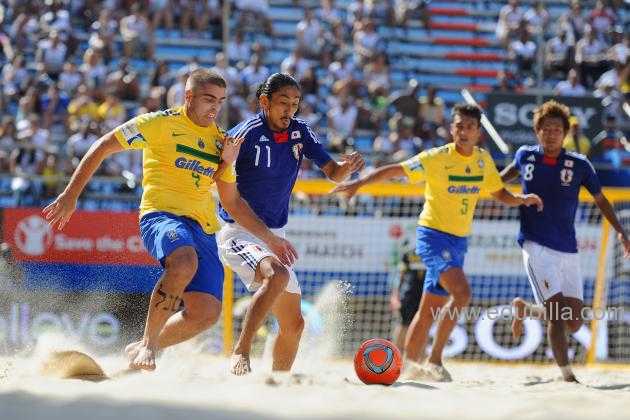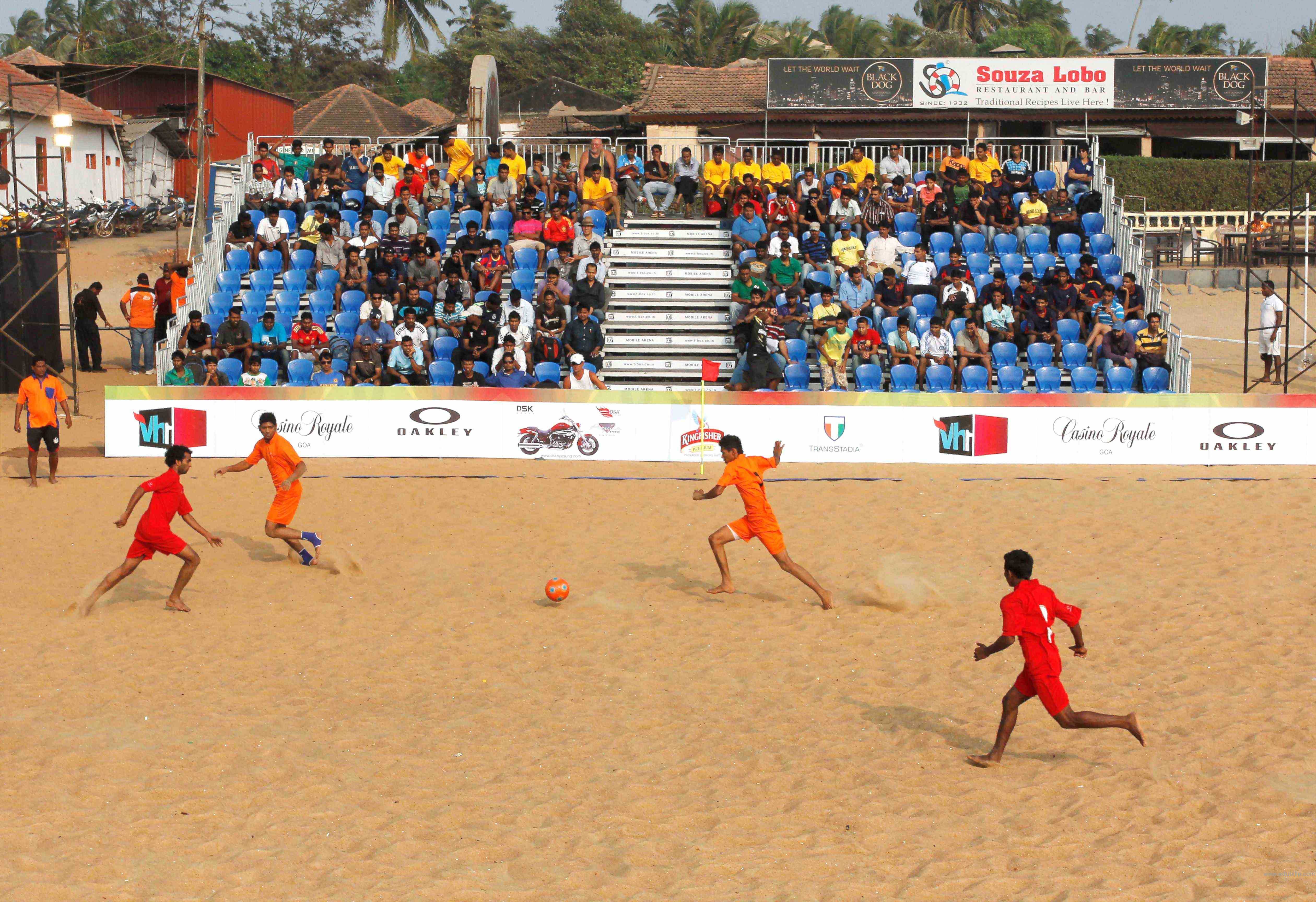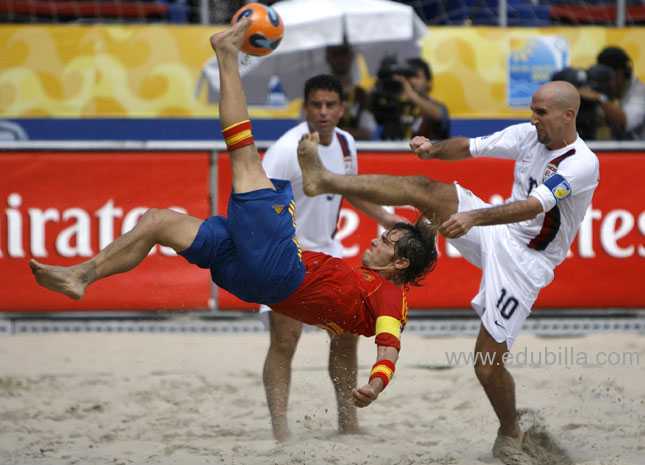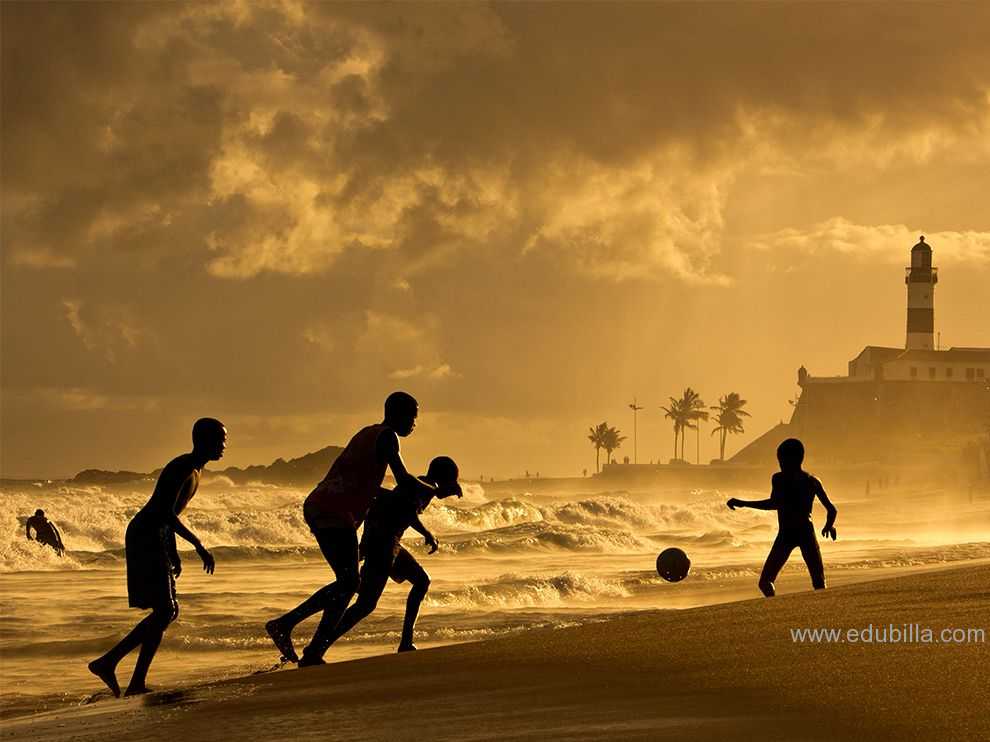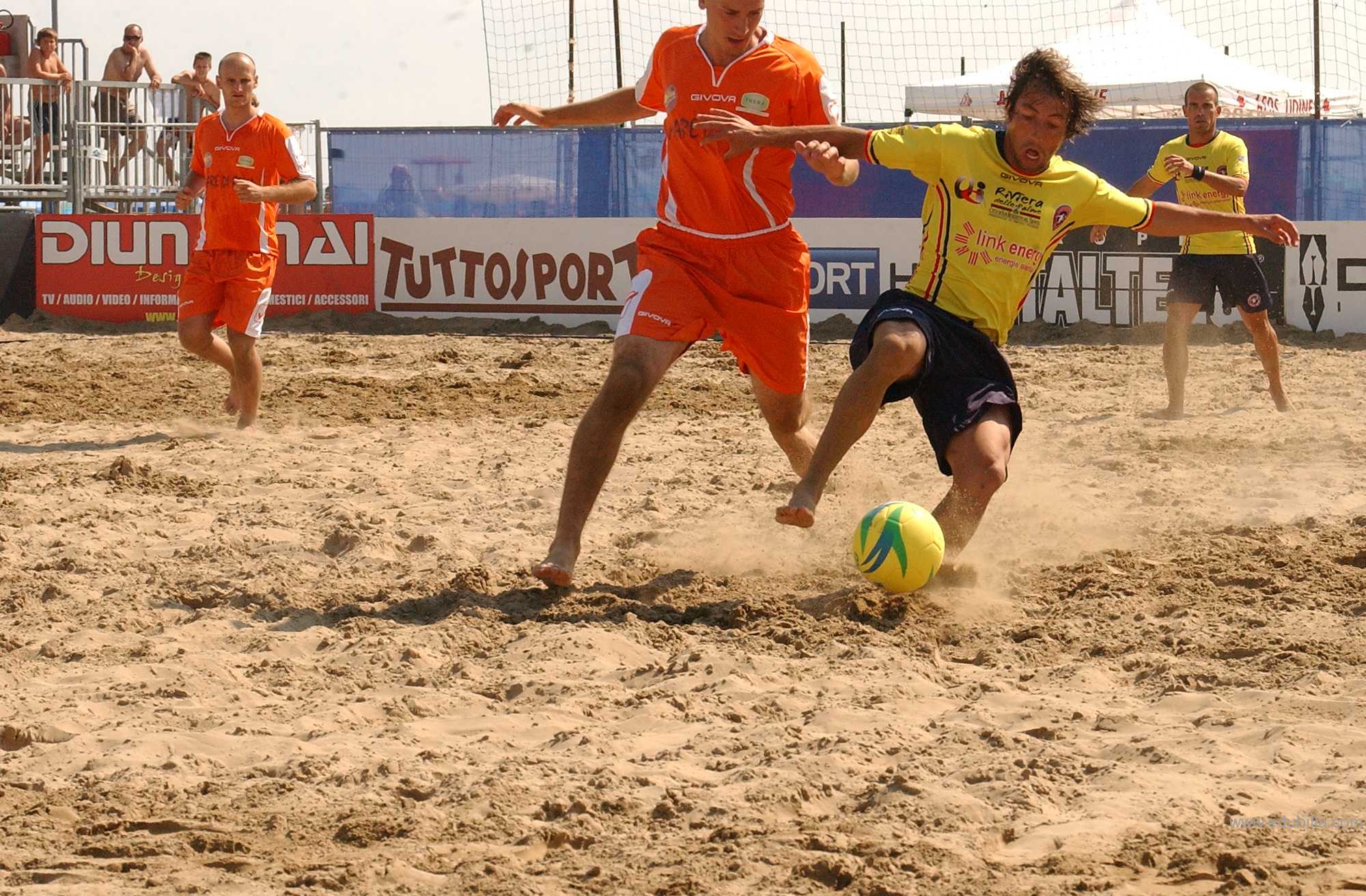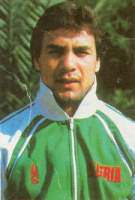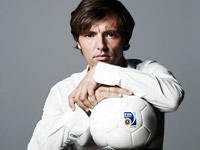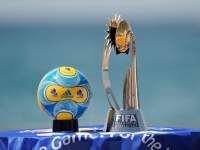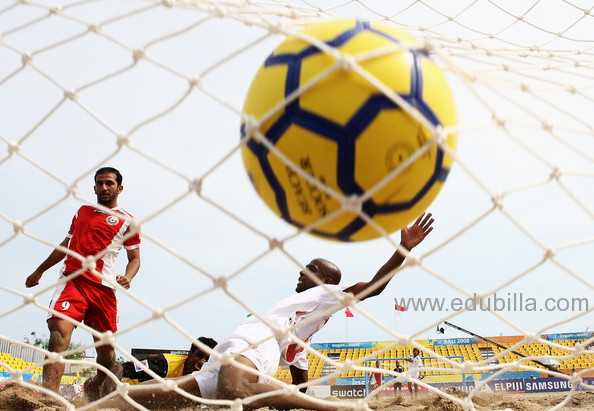
Overview Of Beach soccer
Beach soccer, also known as beach football or beasal, is a variant of association football played on a beach or some form of sand. The game emphasises skill, agility and shooting at goal.
Beach Soccer Worldwide:
Whilst football has been played informally on beaches for many years, the introduction of beach soccer was an attempt to codify rules for the game. This was done in 1992 by the founders of Beach Soccer Worldwide, a company set up to develop the sport and responsible for the majority of its tournaments to this day. This was a major foundation for what is now known as beach soccer and what has led to the sport rapidly growing in popularity
Main beach soccer tournaments:
International:
- FIFA Beach Soccer World Cup
- Intercontinental Cup
- Mundialito de Futebol de Praia
- Mundialito de Clubes
- The Beach Soccer USA Cup
PRO/Amateur International:
- The Beach Soccer Championships - Oceanside, California - USA
- North American Sand Soccer Championships - Virginia Beach, Virginia - USA
- Confederation:
- AFC (Asian Football Confederation):
- AFC Beach Soccer Championship
CAF (Confederation of African Football):
CAF Beach Soccer Championship
CONCACAF (Confederation of North, Central American and Caribbean Association Football):
- CONCACAF Beach Soccer Championship
- CONMEBOL (South American Football Confederation):
- CONMEBOL Beach Soccer Championship
OFC (Oceania Football Confederation):
OFC Beach Soccer Championship
UEFA (Union of European Football Associations):
- Euro Beach Soccer Cup
- Euro Beach Soccer League
- UEFA Beach Soccer Championship
- BSWW Euro Winners Cup
Game Rules
Players:
The maximum number of players in a squad at International standard is 10, of which 2 must be Goalkeepers
FIFA Beach Soccer World Cup & some Qualifiers allow a squad to be maximum 12 players.
Maximum of 5 players, normally 4 Outfield and 1 Goalkeeper, can be on the sand at any one time.
Roll on, roll off substitutions including the Goalkeepers are permitted.
Substitutions are made from the halfway line area, by the player entering the playing area and the player leaving the playing the area, exchanging a bib.
Playing Time:
36 minutes normal playing time.
3 periods of 12 minutes, the clock is stopped in certain circumstances.
If the scores are level after 36 minutes, 3 minutes of extra time are played.
If the scores are level at the end of extra time, then a penalty shoot out takes place.
Each team takes 3 penalties per side, if the scores are level then sudden death penalty shoot out until there is a winner.
The Kick Off:
Kick Off takes place at the start of each period and after a goal is scored.
You CANNOT score direct from a kick off – the ball has to be touched by another player.
All players have to be in their own half at the kick off.
Defenders must be at least 5 metres from the ball.
The ball must move forward by one full rotation.
Defenders CANNOT encroach until the ball has been played, not from when the referee whistle is blown.
Attackers CANNOT enter the opposing half until the ball has rotated forward.
Infringement of the rules can result in a booking.
Free Kicks
All free kicks are direct.
The player fouled must take the free kick.
Infringements for handball or other penalisations, not fouls, means the free kick can be taken by any player from the attacking squad.
The defending team CANNOT form a wall.
Free kick taker may build a small mound of sand with the ball and/or feet, but NOT with hands.
Attacking with a Free Kick in your half
Defenders can stand to the side of the ball but must NOT stand in the cone shaped imaginary segment signalled by the referee.
The same applies to attackers.
The only person allowed in the cone shaped imaginary segment area signalled by the referee is the Goalkeeper.
All players except free kick taker must stand at least 5 metres from the ball.
Attacking with a Free Kick in your opponents half
All Outfield players must stand behind the ball and at least 5 metres from the ball except free kick taker.
Penalties
Are taken from the 9 metre line, Goalkeeper’s area
All Outfield players must stand behind and at least 5 metres from the ball except the penalty taker.
Penalty taker may build a small mound of sand with the ball and/or your feet, but NOT with hands.
Throw Ins
They can be taken with hands or feet.
If the taker looks to throw the ball from behind the head, they CANNOT change their mind and then kick the ball in.
If the taker looks to kick the ball in, they CANNOT change their mind and then throw the ball in.
The taker only has 4 seconds to take the throw in from when they first receive the ball.
Once the taker has picked the ball up, they CANNOT then give the ball to a team mate for them to take the throw in.
The taker CANNOT score direct from a Throw In.
Corners
The taker only have 4 seconds to take the corner from when they first receive the ball.
The taker may build a small mound of sand with the ball and/or your feet, but NOT with hands
The taker can score direct from a corner.
Ball going dead behind the goals
Goalkeepers restart by throwing the ball out of their 9 metre area.
Goalkeepers only have 4 seconds to throw the ball out of their 9 metre area from when they first receive the ball.
General Play
Goalkeepers can take the ball out of their 9 metre area and play the ball with their feet but cannot then re-enter their 9 metre area with the ball and pick the ball up.
Goalkeepers can shoot and score from outside their area.
If the Goalkeeper handles the ball outside their area then a free kick is awarded.
The Goalkeeper cannot throw the ball to an Outfield player in their 9 metre area.
Detailed FBeach soccer Rules Can Be Downloaded From Documents
Equipments Need For Beach soccer
Beach Soccer Goal 550 x 220 cm
made of super stable oval aluminum profile 100x120mm, yellow powder-coated. Net supports made of hot-dip galvanized steel tube, depth top 80cm. The order does not include ground sockets, timber set and goal net.
Beach Soccer Accessory Set
1 pair of beach ground sockets for beach soccer goal, 1 set of timbers for beach soccer goal, 1 piece of beach soccer goal net; white
Beach Ground Sockets
suitable for beach soccer goal profile 120x100mm. Only as spare parts available (as already included in the supply of goal #50400)
Square Timber Set for Beach Soccer Goal
the timber is bonded, treated and weather protected. The set consists of two beams with anchor plates and two basic timbers with connector sleeve. It is simple, practical and safe goal anchorage. Set of 5
Beach Soccer Goal Net
the net is made from 4 mm polypropylene. Color: white. Mesh width: 12cm. Dimensions: 5.70 x 2,25m. Depth top: 80cm. Base: 150cm
Chain Weight
made for beach soccer net (about 800g/m). Covered with plastic and fixing chain at both ends. Length: 8,50m. Base goal depth: 150cm
Beach Soccer Courtlines
for playing field 37x28cm made of 8 cm wide tarpaulin fabric, continuously adjustable by special corner connectors and sand anchor with elastic tensoring
Beach Soccer Flag Set
Pole Base (10 pieces) made of solid plastic, weight approx. 2.7kg
Polyethylene Corner Pole
white color, 160cm long, D=50 mm, without a ground socket and flag. Light, unbreakable, weatherproof, colorfast.
Flag, 45 x 45cm, color yellow, made from cotton fabric, fits for poles of D=50mm
Flag, 45 x 45cm, color red, made from cotton fabric, fits for poles of D= 50mm
Universal Pole Base
made of solid plastic, weight approx. 2.7kg, base diameter is approx. 27cm. This pole base is suitable for the following pole diameters: D=50mm, D=25mm
History Of Beach soccer
Foundation:
Beach soccer (beasal) started in Brazil, more precisely at Leme beach, Rio de Janeiro,and has grown to be an international game. The participation of internationally renowned players such as flamboyant Frenchman Eric Cantona, legendary Spanish strikers Michel and Julio Salinas and Brazilian stars such as Romário, Júnior and Zico has helped to expand television coverage to large audiences in over 170 countries worldwide.
Beach soccer had been played recreationally all over the world for many years and in many different formats. In 1992 the laws of the game were envisioned and a pilot event was staged by the founding partners of BSWW in Los Angeles. By 1993, the first professional beach soccer competition was organized at Miami Beach, with teams from the United States, Brazil, Argentina and Italy taking part.
First Beach Soccer World Championship:
In April 1994 the first event to be covered by network television transmissions was held on Copacabana Beach in Rio de Janeiro and the city hosted the first Beach Soccer World Championship in 1995. The competition was won by the host nation, making Brazil the first ever World Champions of Beach Soccer. The success of the tournament saw commercial interest begin to match developments on the field and growing demand for the sport around the world gave rise to the Pro Beach Soccer Tour in 1996.
Beach Soccer Worldwide (BSWW):
Behind the scenes key developments were also taking place, with the Beach Soccer Company relocating its headquarters to Europe, firstly to Monaco and then Barcelona, before becoming Pro Beach Soccer, S.L. in April 2000. One year later they would join forces with Octagon Koch Tavares, who had continued to organise the World Championships and events in South America, to form a single entity known as Beach Soccer Worldwide (BSWW), with the aim of unifying all major Pro Beach Soccer tournaments in the world under the same structure and providing representation of the sport to major sponsors, the media and FIFA.
Origin Of Beach soccer
Beach Soccer has journeyed from the beaches of Brazil to the hearts of millions of fans all over the globe. The participation of internationally renowned players such as flamboyant Frenchman Eric Cantona, legendary Spanish strikers Michel and Julio Salinasand Brazilian samba stars such as Romario Junior and Zico has helped to expand television coverage to large audiences in over 170 countries worldwide, making Beach Soccer one of the fastest growing professional sports in the world and converting it into a major showcase for international commercial opportunity.
First Beach soccer Games :
The first games of beach soccer were played more than thirty years ago on the beaches of Brazil. The game has become very popular in its home country where pick-up and more organized matches dominate beach space.
In the 1980's beach soccer started creeping northward with tournaments cropping up in San Jose, Virginia Beach (the North American Sand Soccer Championships are held there with more than 200 teams participating each year), Cape Cod, Newport, Atlantic Beach, Miami and New York. There are now more than fifteen tournaments in the United States that attract more than 10,000 beach soccer players.
The first Pro Beach Soccer event was held in 1993 on the Beach of Miami Florida. The Pro Beach Soccer Tour, operated out of the United States, is now a sixteen-stop summer long endeavor that attracts audiences of more than 5,000 people per match. Pro Tournaments are hosted in Europe, North America, South America and Asia.
World Championship:
In April 1994 the first event to be covered by network television transmissions was held on the Copacabana Beach in Rio de Janeiro and the city hosted the inaugural Beach Soccer World Championship one year later. The competition was won by the host nation, making Brazil the first ever World Champions of Beach Soccer
The success of the tournament saw commercial interest begin to match developments on the pitch and growing demand for the sport around the world gave rise to the Pro Beach Soccer Tour in 1996.
The first Pro Beach Soccer Tour:
The first Pro Beach Soccer Tour included a total of 60 games in two years across South America, Europe, Asia and the United States, attracting major names both on and off the field. Interest generated by the tour in Europe led to the creation of the European Pro Beach Soccer League in 1998, providing a solid infrastructure that would increase the professionalism of the spectacle on all levels. The EPBSL, now known as the Euro BS League, brought promoters together from across the continent and satisfied the demands of the media, sponsors and fans. Only four years on from its creation, the successful first step in the building of a legitimate worldwide competition structure for the sport of pro beach soccer had been taken.
U.S. Soccer:
Originally founded in 1913 as the United States Football Association, U.S. Soccer was one of the world’s first organizations to be affiliated with FIFA, soccer’s world governing body, and has grown into one of the sport’s organizational leaders, integrating player participation and player development into arguably the world’s most successful top-to-bottom National Team program.
U.S. SOCCER FEDERATION – What’s in a name?
Throughout the 90-year history of U.S. Soccer, the organization has been known by three different names:
- U.S. Football Association - 1913-1944
- U.S. Soccer Football Association - 1945-1973
- U.S. Soccer Federation - 1974-Current
Governing Bodies
International Federation of Association Football:
The International Federation of Association Football is the international governing body of association football, futsal and beach soccer. FIFA is responsible for the organisation of football's major international tournaments, notably the World Cup which commenced in 1930 and the Women's World Cup which commenced in 1991.
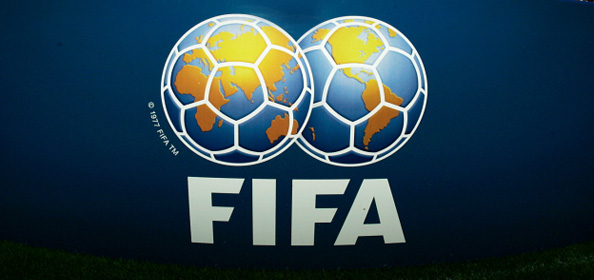
FIFA was founded in 1904 to oversee international competition among the national associations of Belgium, Denmark, France, Germany, the Netherlands, Spain, Sweden and Switzerland. Headquartered in Zurich, membership now comprises 209 national associations. Member countries must each also be members of one of the six regional confederations into which the world is divided: Africa, Asia, Europe, North & Central America and the Caribbean, Oceania and South America.
Although FIFA does not control the rules of the game, it is responsible for both the organisation of a number of tournaments and their promotion, which generate revenue from sponsorship. In 2013, FIFA had revenues of over 1.3 billion U.S. dollars, for a net profit of 72 million, and had cash reserves over 1.4 billion U.S. dollars
FIFA members are divided into 1 of 6 confederations responsible for the game in different regions of the world. These are:
- AFC - Asian Football Confederation
- CAF - Confederation of African Football
- CONCACAF - Confederation of North, Central American & Caribbean Association Football
- CONMEBOL - South American Football Confederation
- OFC - Oceania Football Confederation
- UEFA - Union of European Football Associations
Awards Related To Beach soccer
Euro Beach Soccer League Fair Play Award:
The Euro Beach Soccer League (Euro BS League or EBSL) is an annual European competition in beach soccer.
History:
Started in 1998 as the European Pro Beach Soccer League, the competitions allow national teams to compete in beach soccer in a league format over the summer months. Each season ends with a superfinal in Marseille deciding the competition winner. In 2006 and 2007, the five top teams of this superfinal qualified for the FIFA Beach Soccer World Cup later that year. Spain is the most successful nation, winning the league five times.
Euro Beach Soccer Cup:
The Euro Beach Soccer Cup (Euro BS Cup or EBSC) is an annual European competition in beach soccer. Started in 1998 as the European Pro Beach Soccer Cup.
FIFA Beach Soccer World Cup:
The FIFA Beach Soccer World Cup is an international beach soccer competition contested by the men's national teams of the member associations of FIFA, the sport's global governing body.
Chevron Award:
Chevron awards for the current fiscal year are automatically sent to district governors in the first quarter for presentation to the recipients at an appropriate event, such as a district convention or other celebration. -
UEFA Champions League:
The UEFA Champions League, known simply as the Champions League, is an annual continental club football competition organised by the Union of European Football Associations (UEFA) and contested by top-division European clubs. It is one of the most prestigious tournaments in the world and the most prestigious club competition in European football, played by the national league champion (and, for some nations, one or more runners-up) of each UEFA national association. The final of the 2012–13 tournament was the most watched UEFA Champions League final to date, as well as the most watched annual sporting event worldwide in 2013, drawing 360 million television viewers.
Sample Documents Of Beach soccer
-Andre Agassi

